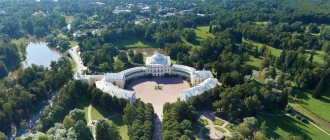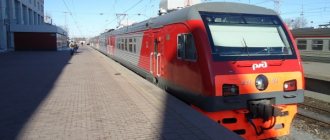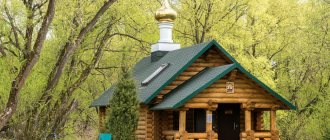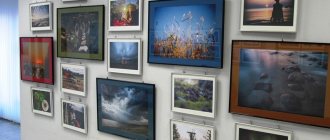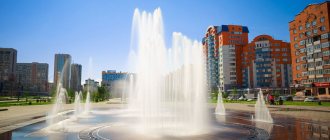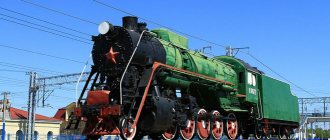The State Museum-Reserve Pavlovsk is a unique corner located in the nearest suburb of St. Petersburg. A huge park area, a magnificent palace, pavilions and historical buildings - all this forms the basis of the museum. The palace and park ensemble was created in the 18th-19th centuries. and is designed in a strict classicist style. Today it is recognized as a UNESCO World Heritage Site.
Pavlovsk is a great place for walks, excursions, photo sessions, at any time of the year, be it snowy winter or the bright colors of summer, spring or autumn. There are also organized excursions inside the palace that will tell you about the difficult fate of the palace, its history and show unique interior objects that have survived to this day.
Pavlovsky Park
This is one of the largest landscape parks in our country, occupying 600 hectares of land. It is divided into seven landscape areas:
- Palace area - this includes the Own Garden, designed in the style of French and Dutch gardens; the center is a linden alley along which carriages drove up to the front porch. Large circles are carpet flower beds and tuff terraces; in the same area there is the famous Labyrinth, built from topiary bushes.
- The valley of the Slavyanka River is an area planted with silver willows and oaks, and there are also numerous plantings of dwarf bushy trees. There are cascades, spills and dams on the river; There are numerous bridges across the river: Gorbaty, Chugunny, Viskontiev and others.
- White Birch is an area designed by Pietro Gonzago in the style of a flat Russian park.
- Old Sylvia - this area is distinguished by a regular layout: here the paths, like rays, run in different directions from the central square.
- New Sylvia is an area of dense deciduous forest, in the thicket of which the Mausoleum of the benefactor spouse is hidden.
- Red Valley - among the ancient oaks and silver willows there are Ruins, artificial ancient ruins.
- Valley of Ponds - deep dark ponds surrounded by a wall of ancient trees.
The park has a large number of pavilions that harmoniously fit into the landscape. All pavilions are divided into two groups: memorial and classical.
The marble and bronze sculptures placed along the alleys of the park are of great artistic value. Bridges were built across the Slavyanka River, which flows here.
Mausoleum to the benefactor spouse
Address: Pavlovsky Park, New Sylvia district
A mausoleum was built in the depths of Pavlovsky Park. There is a dense and gloomy forest around it, the mausoleum was specially built here, in a place of loneliness and sadness, to emphasize its purpose.
Inside it there is a false tombstone (cenotaph), built by the architect I. Martos. Above the tombstone is a stone figure of a young woman, hugging in inescapable grief an urn containing the ashes of her beloved husband. This figure is a symbol of grief for all the dead.
Temple of Friendship
Address: Pavlovsky Park, Slavyanka River Valley area
The rotunda was designed and built by the architect Cameron. Concerts and intimate parties were held in this round building; next to the pavilion there was a small kitchen in the form of a hut, where food was prepared.
The pavilion is decorated only with modest bas-reliefs on the theme of love and friendship. The center of the rotunda is a statue of Catherine in the image of Caeceser. In the summer, the pavilion hosts exhibitions of sculpture from the museum's collections.
Pink Pavilion
Address: Pavlovsky Park, Belaya Bereza district
The romantic building of the architect Voronikhin is built of wood, but one gets the absolute impression that its walls are made of stone. It is surrounded by a magnificent rose garden, which gives the pavilion its name. But even inside it, everything was decorated with images of roses: lamps, vases, furniture, stucco on the ceiling and a huge service.
The harps built into the windows sound from the slightest breeze.
Poets, writers, and artists were received here. These walls remember Batyushkov, Zhukovsky, Karamzin.
Here Empress Maria Feodorovna met Alexander, her son, who had returned from Paris with victory over Napoleon. To make it possible to organize a reception in honor of this event, a special hall was added to the pavilion. This holiday went down in history.
Opening hours and ticket prices to the Pavlovsk Museum-Reserve
When planning a visit to the palace and park complex, please note that opening hours for facilities and exhibitions may vary.
Opening hours of the Pavlovsk Palace in 2021
The palace is open to the public every day from 10:00 to 18:00. Last entry at 17:15.
The ticket office on the Parade Square is open from 10:00 to 17:00; at the entrance to the park - from 10:00 to 16:30. The halls of the Central Building, where the main exhibitions are located, are open according to the palace schedule, but weekends may vary.
Pavlovsk Palace, © Anna Kudryavtseva
Opening hours of Pavlovsk Park in 2021
The park is available to visitors in the summer - from May 1 to August 31, daily from 07:00 to 23:00.
The operating hours of pavilions and other objects of Pavlovsk Park may differ from the general schedule:
- Own kindergarten - daily from 10:00 to 19:00 (from May 8 to August 31);
- Bode Gardening - daily from 10:00 to 19:00 (from July 1 to September 30);
- Pavilion Temple of Friendship - daily from 11:00 to 17:00, Monday - closed (from May 1 to October 31);
- Pink Pavilion - daily from 11:00 to 17:00, Monday - closed (from May 1 to October 31);
- Pavilions Cold Bath and Peel Tower - daily from 11:00 to 17:00, Monday - closed (from May 1 to October 31).
Pink pavilion, © Nina Nina
Ticket prices in 2021
Tickets are sold at the museum box office; their cost depends on the object and category of visitors. The Pavlovsk Museum-Reserve provides days of free admission for privileged persons. The terms and conditions can be found here.
Tickets to Pavlovsk Palace:
- State halls of the palace (2nd floor) and Living rooms (1st floor): adults, students - 600 rubles, students (7-18 years old), pensioners, labor veterans - 300 rubles, families - from 1000 rubles;
- Excursions: group from 10 to 25 people. - for free; individually (up to 4 people) - 1000 rub./person.
Tickets to Pavlovsky Park:
- Free admission from 07:00 to 09:00 and from 21:00 to 23:00, paid - from 09:00 to 21:00 (adults, students - 100 rubles, students (7-16 years old), pensioners, veterans labor - 50 rub.).
- Excursion for groups from 2 to 19 people. is held from May 12 to October 1 on Saturdays and Sundays at 13:00. Ticket - 300 rubles. for all categories.
- Special passes . See their prices and terms of use here.
Tickets for expositions and exhibitions also depend on the object, on average 150–200 rubles. Inspection of some buildings and exhibitions is possible without additional payment, with a general admission ticket.
Prices for visiting exhibitions at the Pavlovsk Museum-Reserve
Round hall, © Nina Nina
Pavlovsk Amusing Fortress (Bip Fortress)
Address: Nadgornaya st., 16
The fortress was built near the Slavyanka and Tyzva rivers on the site of the Marienthal house. Architect Quadri built a pleasure castle in two years, but according to all the rules of military fortification.
That is why the building was registered with the military department for a long time. Every evening the drawbridge was raised in the fortress and a cannon was fired, this continued until 1917. After the death of Emperor Paul, the first school in Russia for deaf and mute children was established in the castle.
In 1919, Yudenich's headquarters was located here. During the Great Patriotic War, the fortress was almost completely destroyed and was a stone box.
The name BIP is interpreted in different ways, one of these interpretations is: “Paul’s Big Toy.”
At the beginning of this century it was restored. Now there is a hotel and restaurant here.
Urban architecture
House with an angel
Address: st. Red Cadet 6/8
Initially, the house belonged to Vera, a court lady of Empress Maria Feodorovna. The Baryshnikov merchants, who later owned the house, collected a unique collection of Russian paintings and porcelain here; Igor Grabar, a famous Russian art critic, visited here.
Invalid home
Address: st. Prosveshcheniya, 3
Built in 1819 by Prince Kurakin. The facade of the building is decorated with a Doric portico, which has survived to this day. The house has been restored and has its original appearance.
Stein's dacha
Address: st. Sadovaya, 9
A unique mansion built in the Empire style.
Cast iron gates
Address: st. Sadovaya, 20
Built according to Rossi's design, they were the gateway to Pavlovsk. Emperor Nicholas ordered them to be built as a gift to his mother Maria Feodorovna.
Palace stables
Address: st. Konyushennaya, 2/11
Built according to the design of architects Brenn and Cameron for the stables of a cavalry regiment.
Train Station
Address: Station Square
The building was built in the Stalinist Empire style.
House of Pavlovsk Palace Administration
Address: Mariinskaya st., 6
Built according to the design of the Russian architect I. Potolov.
Overnight
Since the city is close to St. Petersburg, the choice of hotels is not wide. There are only two of them in the city, but the location and view are original and memorable:
- Hotel "Pavlovsk". Located close to Palace Park. The building itself was previously the summer residence of the royal family. Cost: from 2,100 rubles per day.
- Hotel "Castle BIP". Loyal to its guests, you can stay here with pets. There is free wi fi. Terrace, bar, and barbecue equipment available. Cost: from 12,000 rubles per day.
Pavlovsk Palace
Address: st. Sadovaya, 20 Phone: Website: https://pavlovskmuseum.ru/ Opening hours: 10.00-18.00 closed Friday (may vary depending on the season and weather conditions). Cost: adults: 250 rubles, pensioners: 120, schoolchildren: 100; Pink Pavilion: adults: 100 rubles, students: 50 rubles.
It was originally intended as a noble estate, but after the coronation, Emperor Paul decided to turn it into a summer palace. The palace was built over 50 years, the architects and sometimes the plans for its construction changed. Work on the construction of the palace began with Charles Cameron, and its interior decoration was completed by Voronikhin and Kvarneghi.
The palace at first was a typical noble estate, then Quarneghi turned it into a mansion with three floors and open galleries, then for the coronation of Paul the palace acquired a monumental appearance, for many years numerous galleries were added to the palace, and the architect Vicenzo Brenna also added a wing on each side .
After a fire in 1803, the palace was reconstructed. During the Great Patriotic War, the premises of the palace were looted.
Now the palace has been completely restored. There are 300 majestic, truly royal halls here, ready to receive guests.
Golden embankment
On Zolotaya Embankment there are modern luxury buildings that correspond to the architectural style of the historical part of Pskov. The ensemble surprises with its harmonious and refined design, thanks to which the buildings ennoble the city and make it even more popular.
The builders recreated monuments of civil architecture of the late 19th century. Moreover, next to the Pskov embankment there is a small hotel “Golden Embankment”, which attracts many travelers with its beauty, comfort and affordable prices. There are themed and cozy cafes nearby.
Not far from the Pskov embankment there are museums and theaters.
Location: Sovetskaya embankment street - 2.
Cathedral of St. Nicholas the Wonderworker
Address: st. Artilleriyskaya, 2 Telephone: Opening hours: 9.00-19.00
The temple was built in 1841, was a camp church of the Exemplary Cavalry Regiment and was originally made of wood. There was no heating and no permanent servants. The service was conducted by various local priests.
Then, by decree of Grand Duke Constantine, in place of the wooden temple, the architect Carboniere erected a stone one in the Russian style traditional for that time. It was illuminated in 1902 in the presence of the sovereign's family.
The church was closed in 1930, but in 1941 services in the temple resumed. After the end of the war, the temple was closed again, and only in 1991 it was transferred to the diocese.
The main artistic attraction of the church is the wooden iconostasis, it was made according to the sketches of the artist Subbotin.
Church of Mary Magdalene
Address: st. Sadovaya, 17 Telephone: Opening hours: 9.00-19.00
This Orthodox church was erected in 1784 with donations from Empress Maria Feodorovna as a court church by the architect Kvarneghi. For a long time, there was an almshouse, an orphanage, a hospital and a free pharmacy.
Military relics were kept in the church: captured banners and standards captured by the Russian army in its campaigns.
There are monuments here - cenotaphs (false tombstones) to Count Panin, Prince A. Burakin, tutor to Emperor Alexander Zagryazhsky. The last tombstone, in the form of a white marble mausoleum with a mourning woman, was built by the architect Marcos.
Currently it is a functioning temple.
Museum of Magic
The Museum of Magic is a private institution located in the basement of the house where the Marquis de Sade previously lived. The museum center includes only three small halls, but at the same time you can see the props of illusionists and magicians, objects of optical illusion, old advertising posters, and slot machines.
Sometimes the museum hosts magic shows in French, which will be of interest to adults and their children. However, the museum center dedicated to magic is still an institution for everyone.
Location: 11 - Rue Saint-Paul.
Paris is a truly amazing city in France, which has retained a rich cultural potential and has an extremely interesting history.
